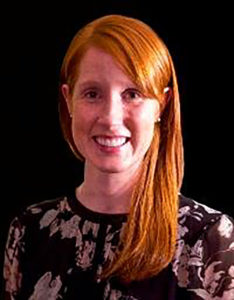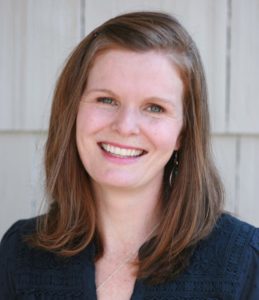Good Faith Estimate
Effective January 1, 2022, a ruling went into effect called the “No Surprises Act” which requires practitioners to provider a “Good Faith Estimate” to individuals who are uninsured or utilize self-pay. The Good Faith Estimate (referred to throughout this document as “GFE”) works to show the cost of items and services that are reasonably expected for your health care needs for an item or service, a diagnosis, and a reason for mental health services. The estimate is based on information known at the time the estimate was created. The GFE does not include any unknown or unexpected costs that may arise during treatment. You could be charged more if complications or special circumstances occur and will be provided a new GFE should this occur. If this happens, federal law allows you to dispute (appeal) the bill if you and your provider have not previously talked about the change and you have not been given an updated GFE.
Under Section 2799B-6 of the Public Health Service Act (PHSA), health care providers and health care facilities are required to inform individuals who are not enrolled in a plan or coverage or a Federal health care program, or not seeking to file a claim with their plan or coverage both orally and in writing of their ability, upon request, or at the time of scheduling health care items and services to receive a GFE of expected charges.
Note: The PHSA and GFE do not currently apply to any individuals who are using insurance benefits, including “out of network benefits” (i.e.., submitting superbills to insurance for reimbursement).
Timeline requirements: Providers are required to provide a GFE of expected charges for a scheduled or requested service, including items or services that are reasonably expected to be provided in conjunction with such scheduled or requested item or service. That estimate must be provided within specified timeframes:
- If the service is scheduled at least 3 business days before the appointment date: no later than 1 business day after the date of scheduling;
- If the service is scheduled at least 10 business days before the appointment date: no later than 3 business days after the date of scheduling; or
- If the uninsured or self-pay individual requests a GFE (without scheduling the service): no later than 3 business days after the date of the request. A new GFE must be provided, within the specified timeframes if the individual reschedules the requested item or service.
- Your schedule and life circumstances
- Your provider’s availability
- Ongoing life challenges
- The nature of your specific challenges and how you address them
- Personal finances
You and your provider will continually assess the appropriate frequency of services and will work together to determine when you have met your goals and are ready for discharge and/or a new “Good Faith Estimate” will be issued should your frequency or needs change.
For questions or more information about your right to a Good Faith Estimate, visit www.cms.gov/nosurprises



 These days we are all walking on water. Beneath us, supporting us, we experience not the solid ground of our once familiar lives—predictable routines, reliable institutions, and in-person engagement—but the deeply disturbing uncertainties, the chaos of this ongoing pandemic. Or worse. Some have experienced the disease firsthand, some have lost family or friends, some have lost businesses, jobs, homes, savings. Struggling to survive, fearing to go under completely, we are walking on water.
These days we are all walking on water. Beneath us, supporting us, we experience not the solid ground of our once familiar lives—predictable routines, reliable institutions, and in-person engagement—but the deeply disturbing uncertainties, the chaos of this ongoing pandemic. Or worse. Some have experienced the disease firsthand, some have lost family or friends, some have lost businesses, jobs, homes, savings. Struggling to survive, fearing to go under completely, we are walking on water.
 Dr. Heather Macdonald joins our clinical staff this spring, bringing with her a wealth of experience and depth of training. We are particularly excited to welcome her to our psychological testing and assessment program. Heather’s professional background includes working with young children, adolescents and adults in a variety of settings with a wide range of identified concerns. A licensed clinical psychologist since 2010, she has experience working with neurodevelopmental challenges, specific learning differences, complex developmental trauma, ADHD (in adults and children), and mood issues.
Dr. Heather Macdonald joins our clinical staff this spring, bringing with her a wealth of experience and depth of training. We are particularly excited to welcome her to our psychological testing and assessment program. Heather’s professional background includes working with young children, adolescents and adults in a variety of settings with a wide range of identified concerns. A licensed clinical psychologist since 2010, she has experience working with neurodevelopmental challenges, specific learning differences, complex developmental trauma, ADHD (in adults and children), and mood issues. What would it be like for you to go 72 hours without alcohol? As part of Alcohol Awareness Month, the National Council on Addiction and Drug Dependence (NCADD) has invited all Americans to abstain from alcohol the first weekend in April (5th-7th). Taking a break from alcohol can be a great way to explore what role it plays in your life, even if you would not identify as someone who struggles with alcohol use.
What would it be like for you to go 72 hours without alcohol? As part of Alcohol Awareness Month, the National Council on Addiction and Drug Dependence (NCADD) has invited all Americans to abstain from alcohol the first weekend in April (5th-7th). Taking a break from alcohol can be a great way to explore what role it plays in your life, even if you would not identify as someone who struggles with alcohol use.
 Once upon a time, when one of my sons was an exchange student in Austria, this happened:
Once upon a time, when one of my sons was an exchange student in Austria, this happened: